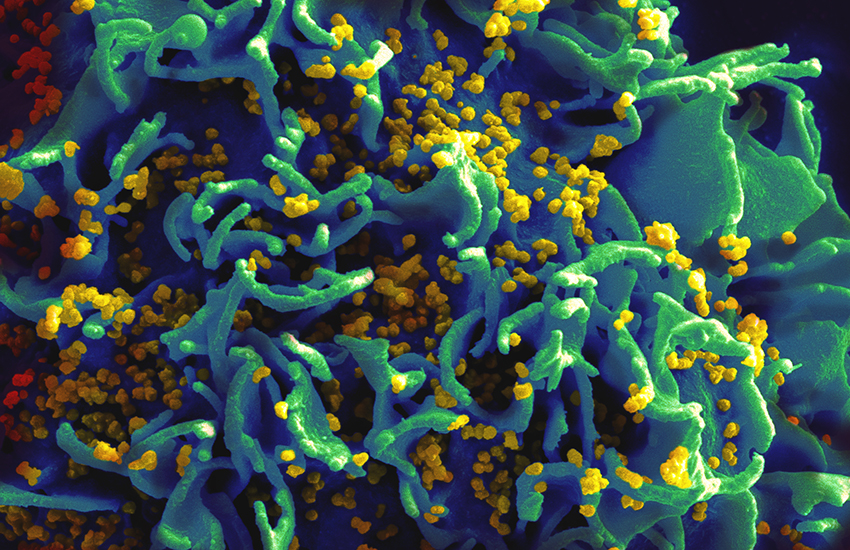This is what HIV looks like when it infects a cell
Asian HIV advocates have warned reports that a new, drug-resistant HIV strain in the Philippines were ‘fake news’.
A report in DW was first published on 9 March that an ‘aggressive and drug-resistant HIV subtype is behind skyrocketing HIV infection’.
That story was then picked up by news outlets around the world, including many gay media outlets.
But HIV experts in the region have condemned the news reports labelling them ‘sensationalized’ and ‘fake news’.
UNAIDS Phillipines country director, Louie R. Ocampo, said the reports were inaccurate.
‘The variants of the HIV found in the country have not changed and are similar to the strains of the virus found throughout Asia and in other parts of the world,’ he said.
‘In addition, there is no conclusive evidence that the strains of the virus found in the country are more infectious than other virus variants, nor is there evidence that they are resistant to the current treatment regimens available.’
But HIV is a problem in the Philippines
HIV is a massive problem in the Philippines with some advocates labelling it a ‘national emergency‘.
New HIV cases have risen 3,147% in the the ten years since 2007, with young men who have sex with men (MSM) the main group of new cases.
HIV network, APCOM, said there was a ‘sad trend’ of MSM who ‘account for 90% of new HIV transmissions in the country’.
APCOM’s executive director, Midnight Poonkasetwattana, said ‘the news from the Philippines about the virulent strain of HIV is not new’.
‘HIV treatment remains effective if those living with the virus get treated early and remain on treatment,’ he told Gay Star News.
‘The government of the Philippines must remove policies that make it difficult for MSM to be educated about HIV and to access HIV services.’
The government and development agencies ‘must also drastically increase funding for HIV programs for communities at high risk of HIV’. Those communities include, MSM, transgender people, sex workers and people who use drugs.
‘These programs include combination prevention, promotion of the benefit of treatment, and making HIV testing linked to treatment confidential, quick and friendly,’ he said.
UNAIDS’ Ocampo agreed that education, prevention and getting people onto anti-retroviral treatment would help keep transmission numbers down.
‘As with all strains of HIV, prevention measures such as consistent condom use, pre-exposure prophylaxis (PreP), and universal treatment which achieves viral suppression are effective in reducing transmission,’ he said.
‘All the strains found in the Philippines are effectively treated with the country’s approved antiretroviral therapy options.’







